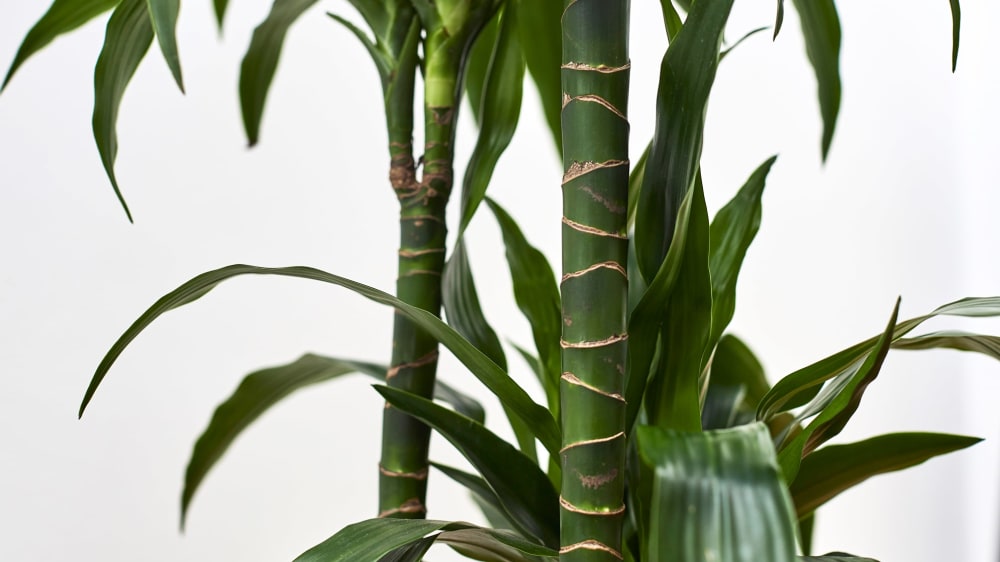Growth and Differentiation of the Stem and Root
 Figure X-1 Plant stem structure | Credit: Patch PlantsOpens in new window
Figure X-1 Plant stem structure | Credit: Patch PlantsOpens in new windowPlant increase in size (growth) and cell and tissue specialization (differentiation) take in a well-ordered sequence in particular areas such as the tips of roots and shoots. |
Differentiation is the change that takes place in a cell, tissue or organ enabling it to perform a specific function.
Growth of stems, for example, is initiated in the apicalOpens in new window or terminal budOpens in new window at the end of the stem (the apex). Deep inside the apical bud lies a tiny mass of small cells, each cell with a conspicuous nucleus but no cell vacuole. These make up the apical meristemOpens in new window where cells divide frequently to produce the tissues which will give reise to the epidermis, the vascular bundles and the parenchyma, collenchymas and sclerenchyma tissues of the cortex and pith.
In addition to its role in tissue formation, the apical meristem gives rise to small leaves (bud scales) which collectively protect the meristem. These scales and the meristem together form the budOpens in new window. Mutation or damage to the sensitive meristem region by aphids, fungi, bacteria or herbicides can result in distorted growth such as fasciation where shoots and other plant parts become flattened or fused together.
Buds located lower down the stem in the angle of the leaf are called axillary budsOpens in new window, each with their own apical meristem which often give rise to side branches. Leaf tissues similarly develop from the apex and form specialized tissues to carry out the process of photosynthesis.
In roots, an apical meristem is also found at the toot tip which gives rise to all the root tissues. Just behind the root tip single epidermal cells become hugely elongated to form many thousands of root hairsOpens in new window which increase the surface area for water uptake.
The root apex itself is protected by a root capOpens in new window which exudes a gel enabling the root tip to grow through the soil more easily and whose cells are continuosly worn away and replaced. Further back from the root tip, lateral rootsOpens in new window develop from the pericycle.
Three distinct zones can be identified in the tips of roots and shoots where growth and differentiation take place. The overall increase in length of the root and stem is brought about by both the increased number of new cells formed by cell divisionOpens in new window in the apical meristems (the zone of cell division) and the increase in their size through cell expansion in the region just behind the meristem (the zone of cell elongation).
Cell expansion is caused by water pressure (turgor pressure) within the cell pushing outwards on the cell membrane.
In the early stages the cell wall is stretchy, enabling the cell to expand, but later on when the cell has differentiated to its final shape, the cell wall loses its elasticity and the cell can expand no further. It is important therefore to make sure that plants are well watered during periods of growth otherwise cells will not reach their maximum size, resulting in an overall smaller plant.
Initially the new cells are unspecialized or undifferentiated, but once expanded, cells change their structure and chemistry to adopt their final role. Their cell walls become rigid and the connectiosn between cells (plasmodesmata) form. The exact shape and chemical composition of the wall is different for each type of tissue cell. This takes place in the zone of differentiation where the epidermis, cortex, vascular tissues and pith become distinct.
You might also study:
- Capon, B. (2005) Botany for Gardeners. Tibmer Press
- Clegg, C.J. (2003) Green Plants: The Inside Story, III Advanced Biology Series. Hodder Murray.
- Clegg, C.J. and Cox, G. (1978) Anatomy and Activiteis of Plants. John Murray.
- Hodge, G. (2013) RHS Botany for Gardeneers. Mitchesll Beazley.
- Ingram, D. S., Vince-Price, D. and Gregory, P.J. (2008) Science and the Garden. Blackwell Science.
- Lack, A.J. and Evans, D. E. (2005) Instant Notes in Plant Biology. Taylore & Francis.

